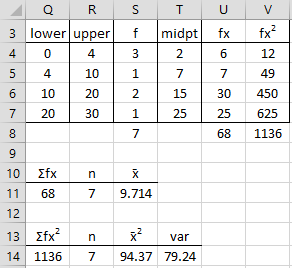
Frequency Distribution Table Creator. There are several easy ways to create an R frequencytable ranging from using the factor and table functions in Base R to specific packages. It is an accurate representation of the numerical data. In the Charts group of commands you see there is a command named PivotChart. Sam put the numbers in order then added up.

Frequency table is a table that shows the distribution or distribution of data frequencies that we have which are composed of frequencies for each class or category that have been set. Remember that in a relative frequency distribution we scale back the frequency using. Before you start though a couple of things to take into account. Click on the Insert tab. It is an accurate representation of the numerical data. Click on the action part of this command the upper part Insert Chart dialog box appears with the list of charts that you can.
Column B states the frequency of the outcomes.
Frequency table is a table that shows the distribution or distribution of data frequencies that we have which are composed of frequencies for each class or category that have been set. For example if ten students score 90 in statistics then score 90 has a frequency of 10. Remember that in a relative frequency distribution we scale back the frequency using. Frequency table is a table that shows the distribution or distribution of data frequencies that we have which are composed of frequencies for each class or category that have been set. Good packages include ggmodels dplyr and epiDisplay. There are different types of frequencies.